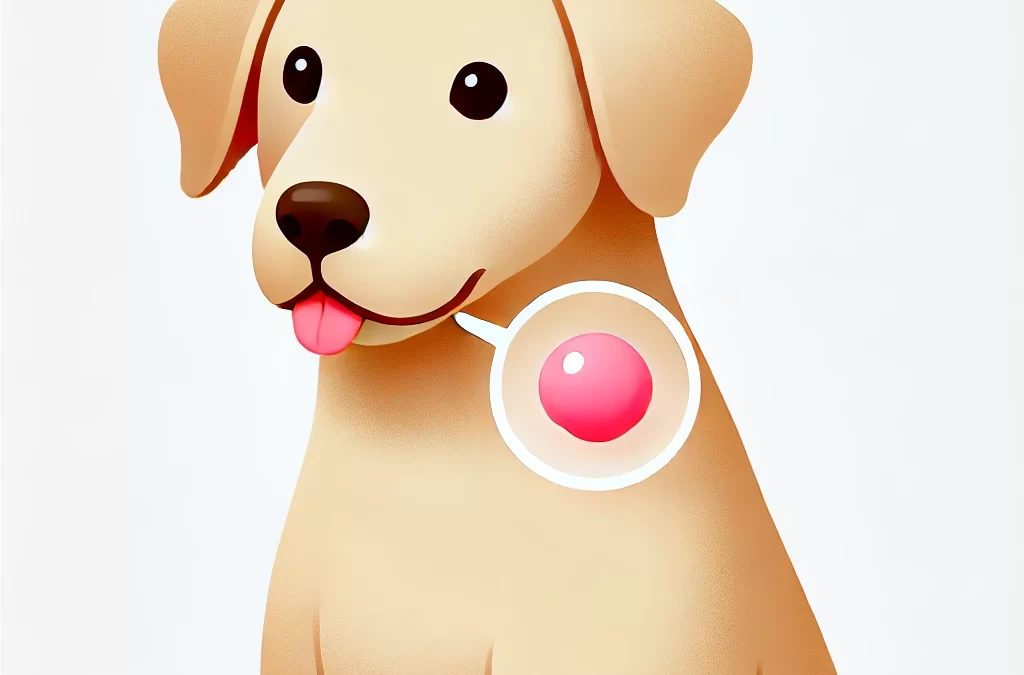Wanneer hondeneigenaren een brok in de keel van hun harige vriend ontdekken, is het logisch dat ze zich zorgen maken. Hoewel sommige bulten ongevaarlijk kunnen zijn, kunnen andere wijzen op ernstige gezondheidsproblemen. Dit artikel duikt in wat deze bulten kunnen betekenen, hoe u de verontrustende signalen kunt herkennen en welke proactieve stappen u kunt nemen.
1. Waarom ontstaan er bulten in de keel van honden?
- Algemene oorzakenGoedaardige gezwellen, zoals lipomen of cysten, zijn vaak ongevaarlijk, maar kunnen soms in de buurt van de keel ontstaan.
- Infecties of ontstekingen:Opgezwollen lymfeklieren kunnen wijzen op een infectie of immuunreactie.
- Tumoren:In de keel kunnen zowel goedaardige als kwaadaardige tumoren ontstaan die nabijgelegen weefsels en organen aantasten.
2. Soorten klonten die u kunt opmerken
- Lipomen: Zacht en gemakkelijk te bewegen, meestal pijnloos.
- Lymfadenopathie: Opgezwollen lymfeklieren die stevig aanvoelen en vaak symmetrisch zijn.
- Kwaadaardige tumoren: Stevige, vaste knobbels die ongemak of slikproblemen kunnen veroorzaken.
3. Symptomen herkennen die verder gaan dan de knobbel
- Moeilijkheden met slikken:Dit kan een indicatie zijn van een groei die de slokdarm of de omliggende spieren aantast.
- Hoesten of kokhalzen: Als de knobbel tegen de luchtwegen drukt, kan dit ademhalingsproblemen veroorzaken.
- Verandering in eetlust of gewichtsverlies: Een ernstig probleem als het gepaard gaat met een aanhoudende brok in de keel.
4. Wanneer moet u zich zorgen maken?
- Snelle groei:Als de bult snel groeit, is het belangrijk dat u deze door een dierenarts laat controleren.
- Pijn en gevoeligheid: Ongemak of een gedragsverandering, zoals het vermijden van aanraking, rechtvaardigt een nadere beschouwing.
- Andere symptomen: Onverklaarbare lusteloosheid, aanhoudende hoest of veranderingen in de stem kunnen wijzen op een onderliggend probleem.
5. Diagnose: wat u bij de dierenarts kunt verwachten
- Fysiek onderzoek:De dierenarts palpeert het gebied om de grootte, textuur en beweeglijkheid te beoordelen.
- Beeldvormingstests:Röntgenfoto's of echografieën geven inzicht in de diepte van de knobbel en de nabijheid van andere organen.
- Biopsie: De meest definitieve test, waarbij een monster wordt genomen en onderzocht op afwijkende cellen.
6. Behandelingsopties
- Waakzaam wachtenBij goedaardige knobbeltjes kan de dierenarts aanraden om de situatie in de gaten te houden in plaats van direct in te grijpen.
- Chirurgisch verwijderen:Als de knobbel de dagelijkse activiteiten belemmert of een gezondheidsrisico vormt, wordt vaak gekozen voor een operatie.
- Natuurlijke supplementen en therapieën:Ontstekingsremmende supplementen of kruidenondersteuning kunnen bij sommige aandoeningen verlichting bieden.
- Chemotherapie of bestralingBij kwaadaardige tumoren kunnen dierenartsen oncologische behandelingen aanbevelen.
7. Preventie en monitoring
- Regelmatige controles: Regelmatige bezoeken aan de dierenarts kunnen ongebruikelijke gezwellen in een vroeg stadium ontdekken.
- Thuisbewaking: Voel voorzichtig aan de keel van uw hond en andere plekken op zoek naar bulten. Houd een logboek bij als er veranderingen optreden.
- Gezond dieet en supplementenVoedingsmiddelen die rijk zijn aan voedingsstoffen en immuunversterkende supplementen kunnen het risico op bepaalde tumoren helpen verminderen.
Conclusie
Hoewel het vinden van een brok in de keel van uw hond verontrustend kan zijn, kunnen proactieve zorg en het begrijpen van mogelijke oorzaken gemoedsrust brengen. Raadpleeg altijd een dierenarts voor professioneel advies en onthoud dat niet alle brokjes gevaarlijk zijn. Door waakzaam te blijven, neemt u de beste stappen om de gezondheid en het geluk van uw hond te waarborgen.


